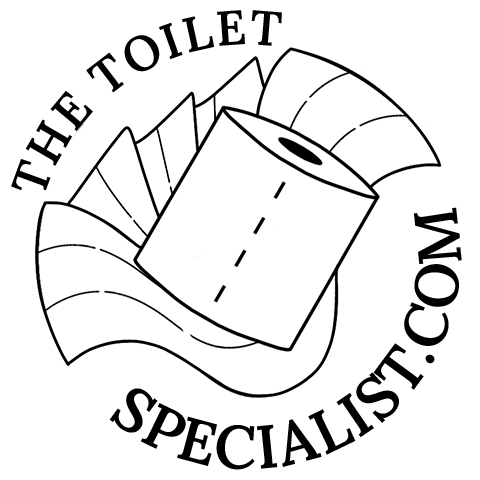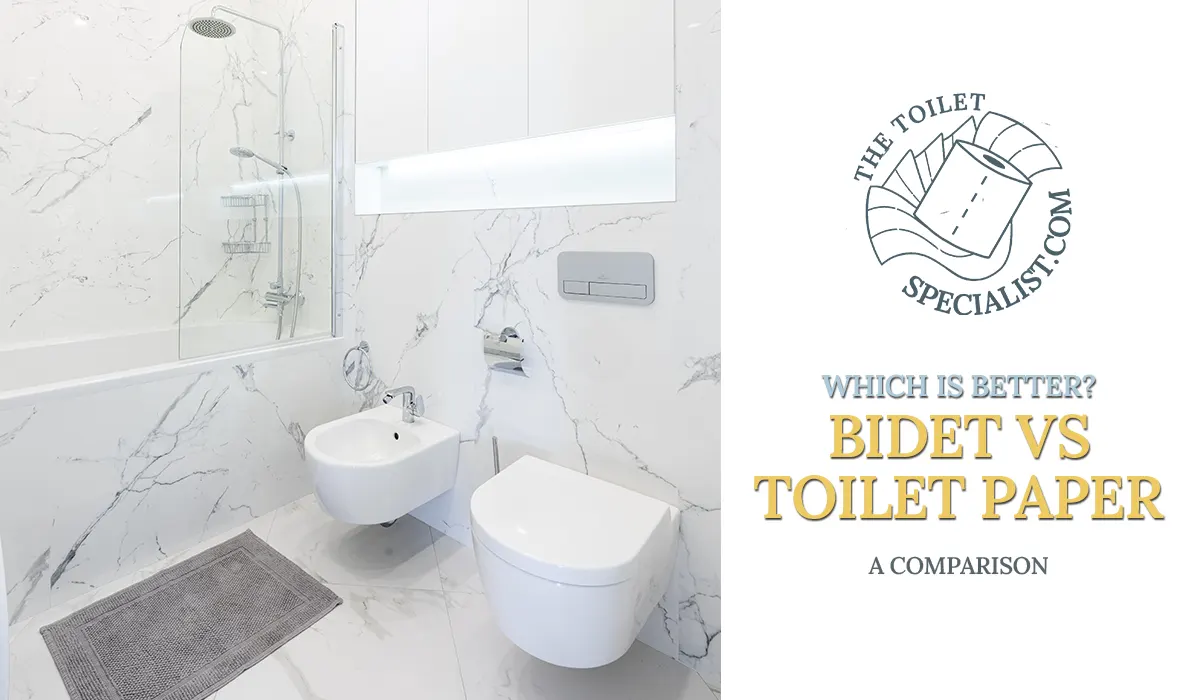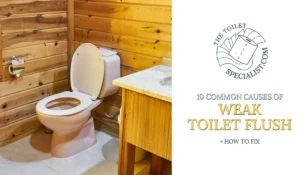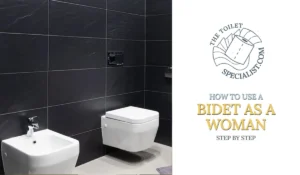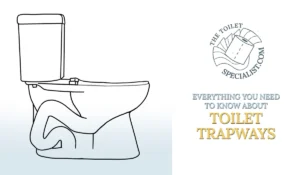In a world that embraces eco-friendly sustainability, it’s important to examine even our daily hygiene habits, such as butt-wiping. Is the bidet perhaps a better alternative to toilet paper?
Generally, a bidet is often considered better than toilet paper. It provides a more thorough and effective cleaning experience, reducing the risk of irritation or discomfort. The use of water is gentler on the skin, and bidets contribute to improved personal hygiene by removing bacteria and particles more efficiently.
Additionally, bidets can be more environmentally friendly, as they reduce reliance on toilet paper and contribute to a more sustainable bathroom routine.
However, we don’t think you should exclude toilet paper just yet. Keep reading!
Pros of using a bidet
At The Toilet Specialist, we wholeheartedly support having bidets in every modern bathroom.
A bidet, such as this Amazon bestseller, is a unique bathroom fixture that’s designed specifically for washing the genitals and buttock areas. Originating from France, this essential piece of equipment has gained popularity in many parts of the world.
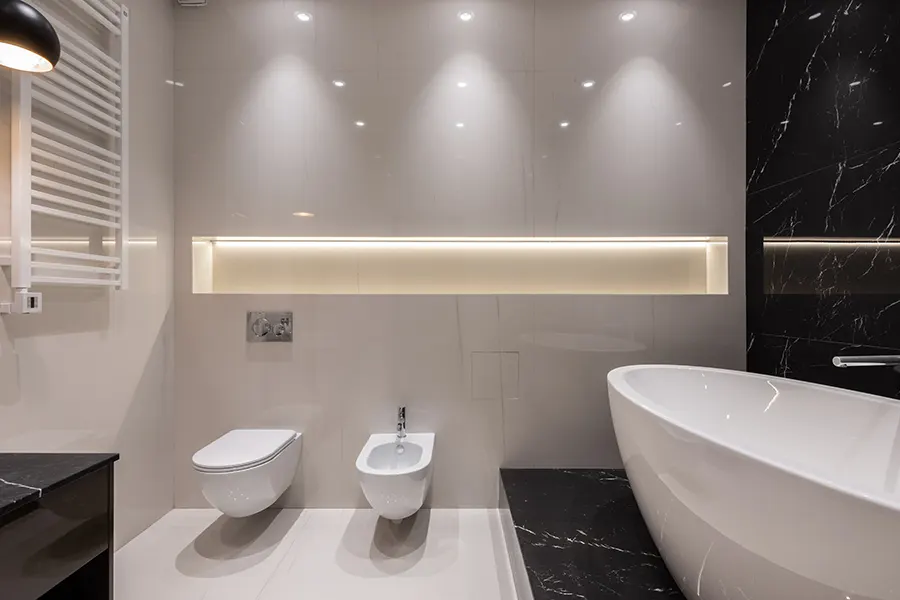
It is better at cleaning than toilet paper alone
A bidet stands out for its superior cleaning compared to toilet paper. Toilet paper might not always provide a thorough clean, but a bidet’s water stream is effective in cleaning the nether regions. This reduces the risk of bacterial buildup and infections, promoting overall health.
So is a bidet more sanitary than wiping? It depends on what you deposited. If you’re stool is very liquidy you might benefit more from using a bidet. If not, toilet paper works just as well.
However, adding moisture makes everything come off a lot easier and might give a more clean feeling.
Alternative to a bidet
But there is an alternative: (DIY) toilet paper spray. This is a skin-soothing liquid that you spray on toilet paper before you use it. It is also an alternative to the notoriously bad-for-the-environment wet wipes. They often contain plastic and are not flushable, even though the packaging says it is.
Water efficiency
Moreover, bidets are surprisingly water-efficient. While there’s a common assumption that bidets use more water for cleaning, the reality is different.
Producing toilet paper actually consumes more water compared to what a bidet uses per cleanse. Industry calculations reveal that a bidet uses only one-eighth of a gallon of water per use, whereas it takes about 37 gallons to produce a single roll of toilet paper.
This significant difference clearly highlights the efficiency of bidets!
Comfort
Bidets are desirable for hygiene, efficiency, and comfort. Many models offer warm water, adjustable pressure, and air-drying. Opt for a fixture with these features, and concerns about skin irritation will be a thing of the past.
Less waste management
When it comes to waste management and maintenance, bidets earn another gold star. With decreased reliance on toilet paper, less waste ends up in the sewage system. This can result in fewer plumbing issues down the line such as clogs or pipe blockages.
These are often caused by excessive toilet paper. Consequently, regular bidet users can enjoy both better hygiene and easier maintenance.
Easy installation
Now, there’s a general apprehension regarding the ease of installation of bidets. But for professionals in the plumbing domain, it’s a straightforward task.
Many of the modern bidets are designed to be attached to your existing toilet, so you won’t need to worry about a complex installation process or significant structural changes to your bathroom.
Overall costs of having a bidet
The costs associated with one include both the initial investment and potential long-term savings.
Of course, the upfront cost and installation of a bidet is higher than toilet paper. The average bidet costs $20-$500, depending on if you buy a handheld one, a toilet seat, or a fully integrated bidet toilet. Bidets often result in reduced toilet paper consumption, leading to long-term cost savings. Some bidets may require electricity, contributing to utility costs.
Maintenance costs are generally low but could be a consideration. Remember, investing in a bidet is an investment in health, comfort, and long-term building maintenance.

Analyzing the Impact of Toilet Paper
Toilet paper – a household staple found in nearly every bathroom across America. Yet, we feel compelled to outline some issues that stem from the continued reliance on toilet paper.
More plumbing issues
Frequent use of toilet paper can lead to plumbing problems. Ultra-plush types, in particular, can strain your plumbing system. Excessive use may create severe clogs, requiring professional assistance later. Even “flushable” wipes, despite their packaging claims, don’t break down easily and can contribute to blocked pipes.
Harsher on the skin
Using toilet paper comes with an increased risk of skin irritation. The repetitive use of fragranced or colored types, in particular, can create more friction against the skin. This heightened friction may potentially result in discomforting issues like anal fissures and hemorrhoids.
Environmental impact
From an environmental standpoint, the impact of toilet paper on Earth’s forests is worrisome. An estimated 27,000 trees are cut down daily to meet the global toilet paper demand, contributing to deforestation and climate change.
It’s not just about the trees; the process of turning wood into toilet paper requires a substantial amount of water and energy, adding to the environmental cost.
Moreover, dealing with toilet paper waste is a challenge in solid waste management. Unlike bidets, toilet paper waste isn’t entirely flushable. Leftover bits of paper can accumulate, leading to significant waste buildup.
This waste can then make its way into the sewage system, ultimately reaching oceans and causing harm to marine life while contributing to environmental degradation.
Overall costs
Finally, the long-term cost of toilet paper is often overlooked. While a single roll might seem cheap initially, the expenses add up with regular purchases. Over a lifetime you spend about $11,000 on toilet paper!
This doesn’t even account for possible plumbing costs resulting from blockages caused by excessive toilet paper use.
Potential downsides to using a bidet
Is there a downside to using a bidet? Well, to some.
While bidets offer various benefits, potential downsides include initial cost and installation, discomfort for some users, who aren’t used to it, electricity requirements, challenges in shared bathrooms, and maintenance costs.
Firstly, the initial cost and installation of a bidet can be higher compared to traditional toilet paper. Additionally, not everyone is accustomed to the sensation of water cleansing and may find it uncomfortable.
Some bidets require electricity, adding to energy consumption. Moreover, in shared bathrooms, adjusting the bidet settings for personal comfort can be a challenge. Lastly, maintenance and repair costs, although generally low, could pose an inconvenience.
In our opinion, these inconveniences aren’t that bad. But for some, they might be!

Can you use a bidet instead of wiping?
Yes!
A bidet can effectively replace traditional wiping methods. By using a focused stream of water, a bidet ensures a thorough and hygienic cleansing experience after using the toilet. This not only eliminates the need for excessive wiping but also provides a more comfortable and efficient alternative.
However, personally, we wipe first and then we use a bidet. But it’s a personal preference. Plus, it depends on what you deposited in the toilet ;).
So, is it better to use a bidet than toilet paper?
In conclusion, it all comes down to preference.
Although the benefits of using a bidet outweigh the rare disadvantages of bidets, it’s not a bad thing to use both toilet paper and a bidet together. Although this is mainly preference. Not everyone who comes to visit knows and wants to use one. So keep that in mind as well.
Prioritizing personal hygiene doesn’t have to harm the environment. Sustainable choices like bidets contribute to a future where our daily actions align with larger environmental goals.
Remember, even small lifestyle shifts like embracing bidets, can make a significant environmental impact!
Disclaimer: TheToiletSpecialist.com is not responsible for any damage caused to your toilet and surroundings by (wrongly) interpreting information found on this site. Please seek custom advice from a professional to evaluate your current situation.
This article may contain affiliate links at no extra cost to you. AF links help support this blog so that it can exist and expand for years to come!
